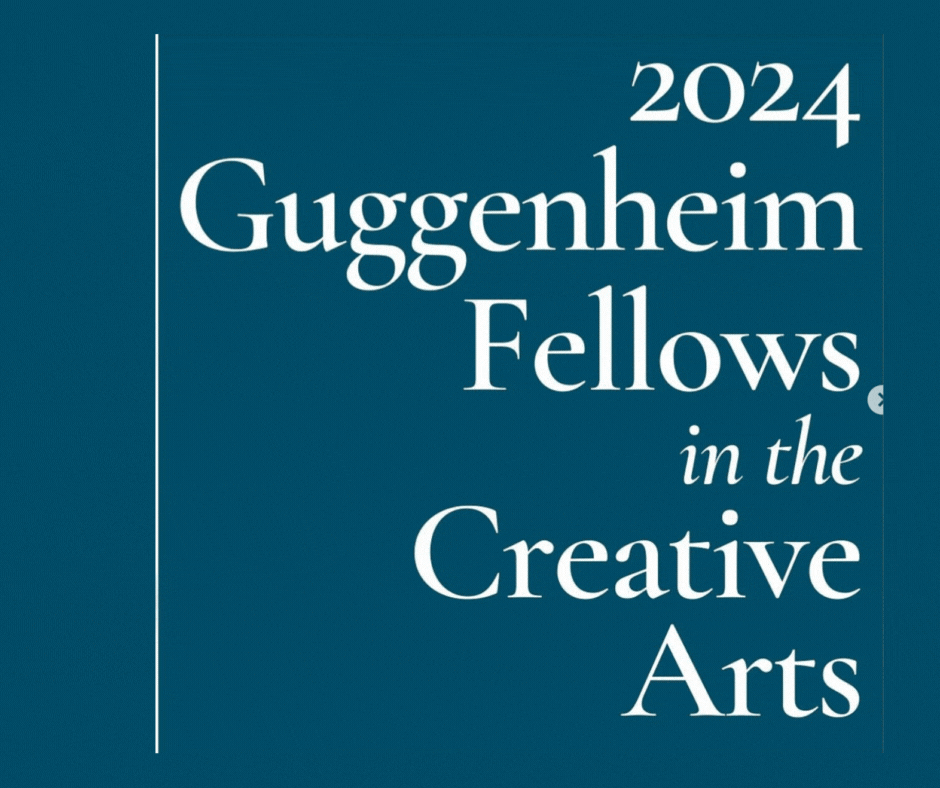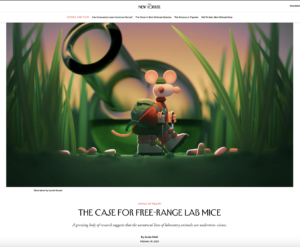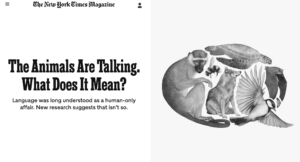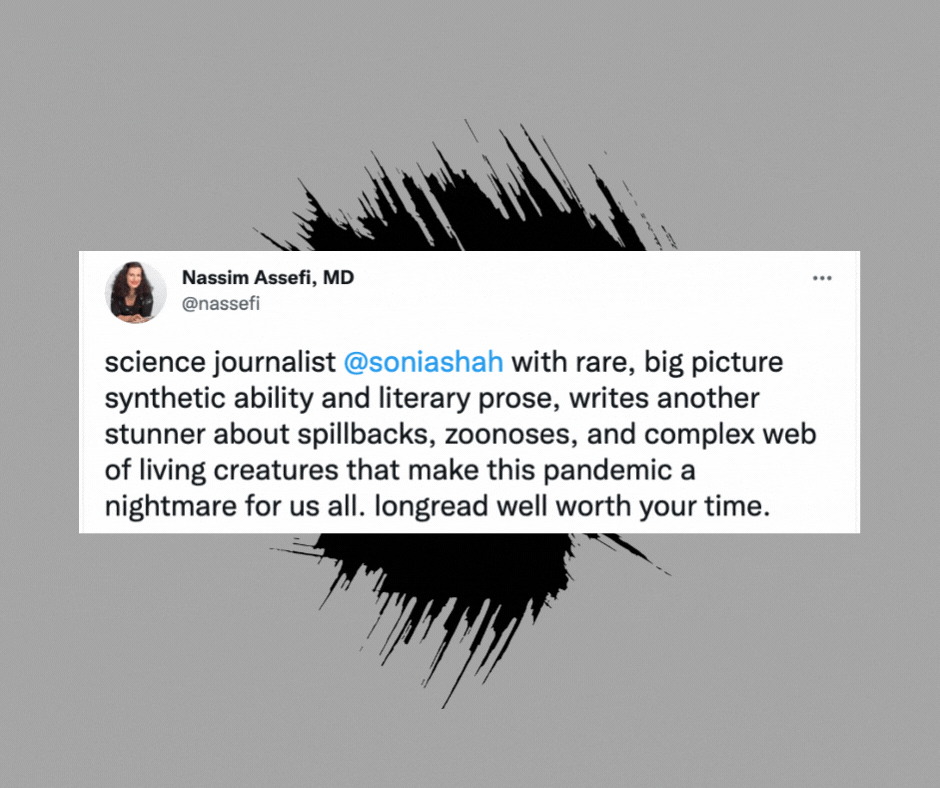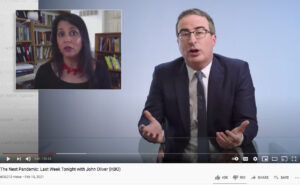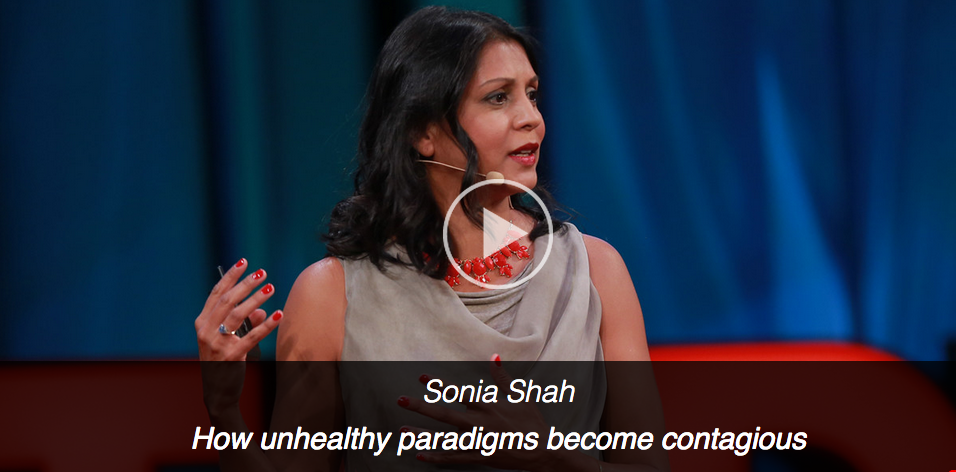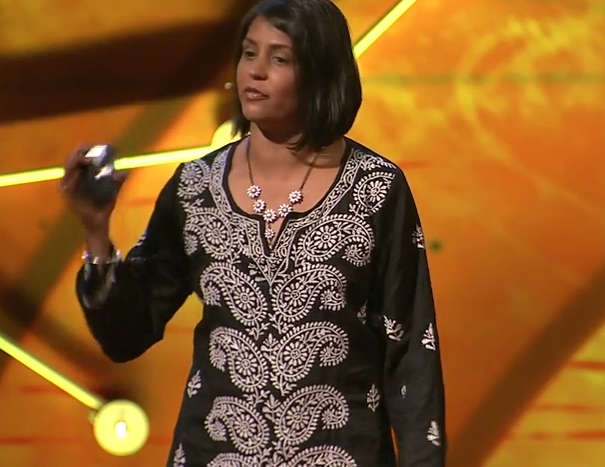My op-ed on why malaria may never be eradicated–think chimps and gorillas–appears in this month’s Le Monde Diplomatique, in the English edition. Read it here: http://mondediplo.com/2010/10/13malaria
Category: Uncategorized (Page 3 of 3)
I had a lovely conversation with Philip Adams of Australia’s national public radio program “Late Night Live” today, about malaria, the fall of Rome, and the bother of mosquito nets. You can check it out here.
October 21, 2010. Interview on malaria eradication. “The Current,” CBC Radio, Canada.
July 26, 2010 8:10 am. Author interview on “Lanigan & Malone,” WMJI, Cleveland, OH
March 8, 2006
A cartoon man looks through his binoculars at a mist-covered mountaintop in the distance, but the peak is obscured by clouds. “Peak oil?” intones the caption. “Contrary to the theory, oil production shows no sign of a peak.”
Good news from ExxonMobil, as featured in this prominent ad in the New York Times last week. “According to the U.S. Geological Survey,” the ad reads, “the Earth was endowed with over 3.3 trillion barrels of conventional, recoverable oil…Since the dawn of human history, we have used a total of one trillion barrels of oil.” That is to say, worried friends, “there is a lot of oil yet to be tapped,” and “abundant oil resources” are “still available” and will be for “decades to come.”
Phew! And here I was worrying.
Only…isn’t the U.S. Geological Survey the same outfit that said, in a 32,000 page report released in 2000 that there was 47 billion barrels of oil still to be found in…Greenland?
That number was calculated by figuring there was a 95 percent chance of 1 barrel of oil lurking under the hitherto-neglected continent—a fair assessment given the conventional wisdom—as well as a 5 percent chance of finding some 112 billion barrels of oil. Add the two together, divide by two and presto, the government geologists had conjured up an oil reserve half the size of Iran’s. Truly.
I like how ExxonMobil couched our oil consumption to date using the calming phrase, “since the dawn of human history.” It makes it sound as if homo habilis was driving around in a Lexus or something. In fact, we hardly used any oil whatsoever during the overwhelming majority of human history. We evolved from apes say about half a million years ago or so? The first oil well was drilled not even 150 years ago. And we didn’t start consuming much oil until after the second World War, since before then we had trolleys and bicycles and used crude primarily for lighting. So maybe 99 percent of those 1 trillion barrels were consumed in the last .0001 percent of human history.
So what’s with the rosy picture, Exxon? Peak oil has entered the public lexicon, and people are snapping up hybrid cars (fat lot of good that will do, but it’s the symbolism of the thing). Meanwhile, the world’s biggest oil company, which in 2004 posted the highest one-year operating profit of any company ever in all of U.S. history is busy investing its bulging treasure chest not in hydrogen, ethanol, or any of the touted alternatives to crude but in…more oil. The company’s single largest investment in a new project ever was launched this year: a $7 billion project to turn natural gas into diesel. Don’t worry. Be Happy. Drive Diesel.
March 6, 2006
Before you add “The Constant Gardener” to your Netflix queue–Rachel Weisz won an Oscar for her role in the film last night, please note: the issues are real, but much of the movie is pure fantasy. No activist challenging the unethical practices of Big Pharma has it this good—or this bad.
The film revolves around the transformation of mild-mannered career diplomat Justin Quayle, played by Ralph Fiennes. Quayle’s wife Tessa, played by Rachel Weisz, has exposed a botched experimental trial conducted by a Western drug company upon unsuspecting African villagers. After she is found mysteriously murdered, Justin is infected with his firebrand wife’s righteous indignation.
The film couldn’t be timelier. According to the May 16 2005 USA Today, giant drug outfits such as Wyeth and Merck are now conducting up to 70 percent of their clinical trials outside the U.S. and Western Europe, their main markets for new drugs. Across Latin America, Eastern Europe, Asia, and Africa, the sick are abundant, desperate, and doc-trusting, and so recruitment into clinical trials is rapid. As one executive from an outfit specializing in running drug trials in Asia putit: “They are more willing to be guinea pigs.”
The industry’s new experimental bodies in the developing world only rarely enjoy the benefits of the research they participate in. Sometimes the new drugs are unlicensed in their countries or priced out of reach, but more often the drugs are irrelevant to the health priorities of their communities to begin with. After all, 90 percent of the global medical research budget takes aim at illnesses that cause just 10 percent of the world’s disease burden.
Not surprisingly, ethical lapses are strikingly common. In one inquiry, out of 33 subjects enrolled in an experiment trial in Thailand, all of whom had signed forms stating their informed consent, 30 were found to be dangerously misinformed. “Informed consent is a joke,” said one industry researcher in an anonymous survey sponsored by the National Bioethics Advisory Commission.
But challenging these practices is not nearly as black-and-white as this film would have it. Tessa stands up to yell “bullshit” at public lectures, shaking her lovely dark mane while she’s at it. At cocktail parties, she loudly embarrasses the health minister, who marches off in a huff. Good stuff, but the reality is that uncompromising activists—even if they look like Rachel Weisz –rarely enjoy this kind of privileged access to power so effortlessly.
Tessa has it too good and too bad,too. She ends up paying for her exposure of the botched trial with her life; in real life, bad drugs and unethical research practices often continue unhindered despite mountains of data and reports detailing their defects. As I found while researching my book, experimental protocols that would be condemned as unethical in the West—including placebo trials among ailing AIDS patients—are frequently described in the medical press; when the subjects are poor Africans or Asians, nary an eye is batted. (Recall that papers describing this country’s most egregious scientific study, the Tuskegee Syphilis Study, in which government doctors denied treatment to black syphilitics, regularly appeared in the medical press from the 1930s onwards. That study wasn’t terminated until 1972.)
In part that’s because new drugs aren’t uniformly deadly, rendering unequivocal data showcasing their killer properties. Rather, new drugs do work—just not very well, or not for everyone, or not without side effects, or most frequently, not any better than older, safer drugs. What that means is that the difference between a miracle drug and a poison lies not in the drug itself but in who uses it, how they useit, and when—decisions increasingly steered not by patients and clinicians but by the marketing departments of multinational drug companies.
And there in lies the real problem.
For my complete review, see The Nation online.
February 28, 2006
Leave it to a twelve-year-old to come up with this cheeky experiment: comparing the levels of bacteria in ice cubes from fast food restaurants…to the water in their toilet bowls. And her result? The toilet bowl water was cleaner. See the story here.
This science fair experiment is currently making the rounds on Jay Leno, ABC, and the rest. According to “Good Morning America”‘s David Katz, this is “not cause for panic, although it is alarming.”
I’ll say! But the problem isn’t that our ice cubes are so dirty, it’s that our toilet water is so damn clean. We’re shitting and peeing in this pristine water—cleaner than our own ice cubes!—while around the world, 6,000 children die every day for lack of adequate sanitation. See the BBC story here.
Surely there’s a tale to be told there.
As for science whiz Jasmine Roberts, she’s not letting her friends chew on ice anymore.
August 17, 2006
Exposing prisoners to experimental drugs would be allowed only after the completion of early toxicity testing. This will hardly restrain drugmakers because they don’t need prisoners for early toxicity testing anyway. Students and homeless people line up in droves for the $200 daily fee, plus room and board, on offer at the industry test clinics. It’s “money for doing almost nothing,” as one test subject, a former law student, told me.
The bottleneck for drugmakers is in recruiting warm bodies for late-phase trials that establish a new product’s effectiveness with statistical certainty. These “Phase 3″ trials can require tens of thousands of patients to complete, and most drug-saturated Americans are reluctant to take part. Eighty percent of trials fail to meet recruitment deadlines, bleeding drugmakers of $1 million a day while their blockbuster wanna bes remain locked up in development.
To solve the dilemma, many drugmakers have rushed overseas, to places like India and Poland, where sick, desperate patients are abundant. Now, if the institute’s recommendations hold sway, they’ll be able to access the 7 million souls captive to the US correctional system as well. The institute’s proposed caveat — that prisoner experiments include subjects from outside prison walls as well — will make little practical difference in such trials. Few, if any, drugmakers would want to restrict these huge trials to prisoners anyway.
The institute also recommends that prisoners help oversee prison experiments. Unfortunately, often in resource-constrained environments, most everyone has an interest in the resources that well-funded research can bring in. “It generates quite a bit of hard-earned money,” one clinical investigator in South Africa explained to me. According to the institute, prisoners shouldn’t be deprived of this by a “myopic” obsession with informed consent.
The rationale, according to the institute, is that “access to research may be critical to improve the health of prisoners and the conditions in which they live.”
This is a bit fuzzy. Research breakthroughs alone don’t change conditions, as anyone who has seen stockpiles of vaccines rotting in tropical warehouses can tell you. Change requires the implementation of research, which most researchers are neither responsible for nor interested in. Sadly, there’s no guarantee that helpful research on prisoners will be promptly — or ever — applied to improve prison conditions.
In fact, the institute can scarcely ensure that research on prisoners offers the “potential benefit” that their proposed regulations call for. Pediatric trials are supposed to offer “potential benefit” to children. Why, then, do clinical-trials registries list just one trial on pediatric AIDS (a fatal disease for which few pediatric formulations of needed medicines are available), compared with no fewer than 70 on high blood pressure in children?
These experiments are not designed for their potential benefit to children, although drugmakers effectively argue that some subset of children will benefit from them. Rather, children are rounded up for such trials because blood-pressure drugs bring in $25 billion a year for drug companies, and testing these primarily adult medications on children extends drugmakers’ brand-name patents by several lucrative months.
Since 2000, Food and Drug Administration officials and drug executives have led a movement to restrict the rights of human subjects in medical research: from making substandard care to the poor acceptable, to gutting strict curbs on the use of placebos. The institute’s stance seems part of the trend. But once the experimenters are given the keys to the lockup, the choice for the imprisoned will be stark.
Behind bars, “death at random is a way of life,” according to one prisoner who spoke to government advisers prior to bans in the 1970s. “The only place in this prison that people don’t die is in the research unit,” he said. “Just what is it that you think you are protecting us from?”
For this prisoner, at least, the choice was clear: Be experimented upon or die.
February 17, 2006
News flash: “Too much contemplation gets in the way of good decision-making”! (Greg Miller, Science, February 17,2006). “Thinking too hard about complex decisions…may lead to worse choices”! (Newsday, February 17, 2006). “New advice for anyone who is struggling to make a difficult decision: Stop thinking about it”! (Boston Globe, February 17, 2006) Dimwits everywhere rejoice!
A new study in today’s Science magazine says that thinking too much is bad for you. I think not.
I admit I was intrigued by these new findings. But the spin is all wrong.
Psychologists at the University of Amsterdam studied different ways people make decisions about things like buying shampoo or a new car. Some of their subjects evaluated all the relevant information—price,size, what have you—and then made a decision. Others evaluated all the relevant information, then killed sometime distracting themselves, and then made their decision.When faced with only a few variables, surrounding the choice to buy shampoo,for example, the first method worked better (judged subjectively as well as objectively). But when faced with a larger array of variables, surrounding buying a house or car, the second method worked better. Why? Because, the researchers say, the second method allows the brain to do some unconscious processing, which is probably better than the conscious mind at synthesizing complex variables.
To me this study underlined how important it is for people to have downtime—time away from rapid-fire, always-on computer and television screens, instant messaging, cell phones, deadlines, one damn just-in-time thing after another. The need for contemplation! For relaxation! For all the things that allow one to descend below conscious thought into (hopefully) deeper levels of processing. Say, like…sleep! Music! Literature!
And so the spin that the press is putting on it—”Stop thinking!”—is all wrong. What the study suggests is: Think Deeper.
But it is suggestive that the “stop thinking” angle has such appeal. What does it mean? Nothing good, I’m afraid. Seems like yet another sign of a society in decline, one that elects cowboys as presidents and considers contemplation suspicious.
January 16, 2006
As the Times series has amply shown, our health suffers when we rely on fast foods and sugary drinks to sustain ourselves. But in places where malnourishment and poverty are rampant, the ramifications are even more profound.
In Western countries the transition from hardscrabble malnourishment to today’s drive-through, fast-food cornucopia occurred over centuries, with the happy result that our societies were able to control infectious diseases spread by hunger and poverty before facing the maladies of richly calorific diets, including diabetes, obesity and heart disease. As anyone who has seen the KFCs and Pizza Huts sprouting along the alleys of Mumbai and Cape Town knows, in developing countries, no such time lag exists. What experts call the “nutrition transition” is taking place within a single generation.
According to recent research, malnourished mothers tend to bear babies predisposed to storing excess energy as fat. This is a useful adaptive advantage in communities where calories are often scarce, enabling babies to survive nutritional deficits. But when such babies grow up to consume Western-style diets chock-full of fatty, sugary foods, that benefit turns into a deadly curse, leading them to gain disease-causing extra fat much more rapidly than they would have otherwise. And so, hot on the heels of the multinational soft drink and fast food companies in poor countries has been an epidemic of chronic disease.Today, four of out five people who die of chronic, noncommunicable diseases such as diabetes and heart disease perish not in New York or California but in developing countries, according to the World Health Organization. More Indians and Chinese suffer cardiovascular disease than Americans, Japanese, and Europeans put together.
Diabetes and coronary heart disease are epidemic in India, which is home to the greatest concentration of Type II diabetes sufferers in the world. In some areas of Africa, as many as one in five has diabetes. Nearly 20 million Africans suffer from hypertension. Worse, while diabetes in rich countries is primarily a condition of the elderly, in developing countries the disease strikes those in the prime of life, aged forty-five to sixty-five, slashing their average life expectancy by ten to fifteen years. For developing countries barely treading water amid the flood of malnutrition, HIV infection, malaria, and tuberculosis, “the public health implications of this phenomenon are staggering,” the WHO has noted, “and are already becoming apparent.”
The era of strings-attached IMF and World Bank loans, which forced the dismantling of many indebted countries’ public-health infrastructures, is partly to blame. Global trade agreements forged throughout the 1990s eased the entry of soda makers and fast-food companies into the emerging markets of the developing world. As we start to address the deadly legacy of hyper-marketed fast foods and sodas here at home, we should remember that the problem does not end at the corner Burger King. We’ve spread the problem beyond our borders, where its effect is likely to be much worse.
